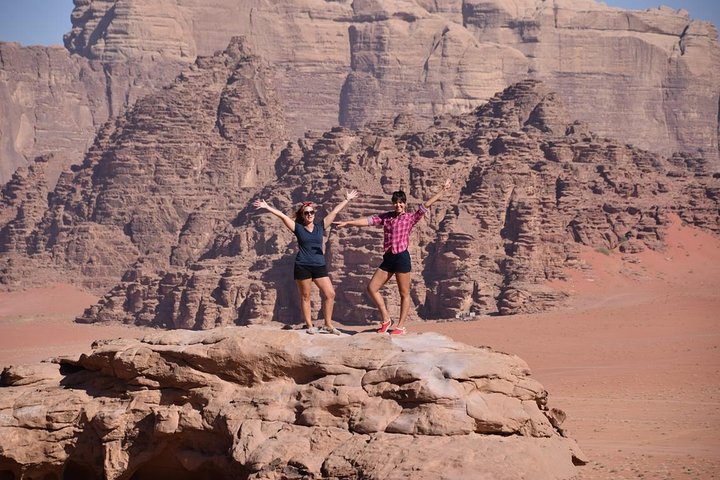Exploring Northern Jordan: A Spiritual Pilgrimage Through Time
Embark on a spiritual and historical journey through Northern Jordan’s ancient treasures. Discover the grandeur of Jerash, the resilience of Ajloun Castle, and the cultural crossroads of Umm Qais. Join me as I explore these sites, each offering a unique connection to the past and a reflection on faith and history.
A Journey Through Time: The Ancient City of Jerash
As the sun rose over Amman, I found myself embarking on a journey that promised to be both a historical exploration and a spiritual pilgrimage. Our guide, Khalid Najjar, greeted us with a warm smile as we set off towards the ancient city of Jerash. Known as one of Jordan’s most significant Roman sites, Jerash is a testament to the grandeur of ancient civilizations.
Upon arrival, the sheer scale of the ruins took my breath away. The city, with its colonnaded streets, hilltop temples, and amphitheater, seemed to whisper stories of a bygone era. As I wandered through the ancient streets, I couldn’t help but feel a deep connection to the past. The amphitheater, in particular, was a place of reflection. Standing there, I imagined the voices of those who once gathered to witness performances, their laughter and applause echoing through time.
The heat of the day was intense, but the experience was invigorating. I paused to quench my thirst with a refreshing lemon and mint drink at a nearby café, a moment of respite that allowed me to absorb the profound history surrounding me. Jerash is not just a site of ruins; it is a living narrative of human achievement and resilience.
The Fortress of Ajloun: A Testament to Faith and Defense
Our journey continued to the formidable Ajloun Castle, a 12th-century fortress that stands as a symbol of Islamic military architecture. As we crossed the bridge into the castle, a wave of emotion washed over me. The castle, built by the forces of Saladin, is a monument to the defense of faith and homeland.
Walking the ramparts, I felt the presence of those who once stood guard against the Crusaders. The view from the top was breathtaking, offering a panoramic vista of the Jordan Valley stretching towards the Dead Sea. It was a moment of spiritual reflection, a reminder of the enduring strength of faith and the sacrifices made in its name.
The castle’s uneven stairs and ancient corridors were a journey in themselves, each step a connection to the past. As I explored the chambers and galleries, I was reminded of the rich tapestry of history that defines this region. Ajloun Castle is more than a historical site; it is a place where the past and present converge, offering insights into the spiritual and cultural heritage of Jordan.
Umm Qais: A Crossroads of Cultures and Faiths
Our final destination was Umm Qais, a city that once thrived as a cultural center for poets and philosophers. Known in antiquity as Gadara, it is a place where the echoes of history are intertwined with spiritual significance. According to biblical accounts, it is here that Jesus performed the miracle of the Gadarene swine.
As I stood amidst the ruins, the juxtaposition of Roman architecture with the remnants of an Ottoman-era village was striking. The site offers a unique vantage point, with views extending across three countries: Jordan, Syria, and the Israel and Palestinian Territories. It is a place where borders blur, and the shared history of the region comes into focus.
The journey through Umm Qais was a fitting conclusion to a day filled with exploration and reflection. It is a reminder of the interconnectedness of cultures and faiths, a testament to the enduring legacy of human civilization. As we made our way back to Amman, I carried with me a renewed sense of wonder and a deeper appreciation for the spiritual and historical treasures of Northern Jordan.














































